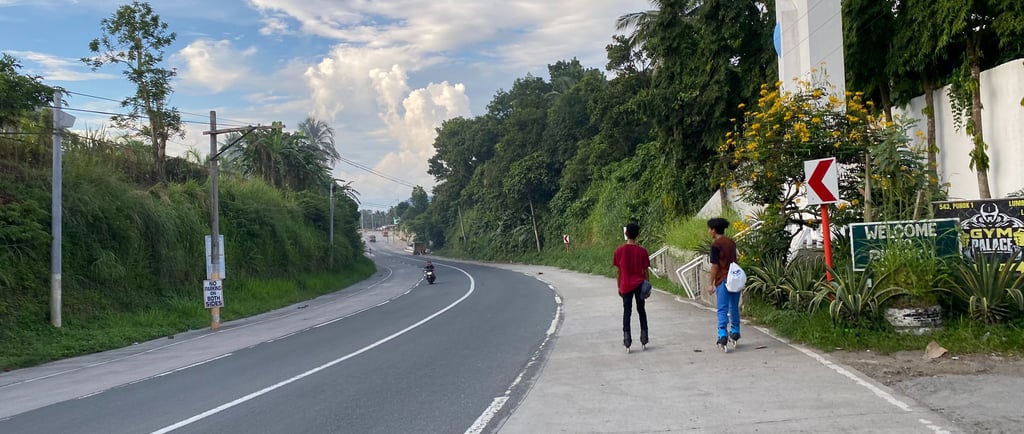The Future of Roller Skating Sports in the Philippines
BLOG
9/17/20245 min read


Current Landscape of Roller Skating in the Philippines
The roller skating scene in the Philippines has experienced a notable evolution in recent years. With growing interest in both inline and quad skating, the country is witnessing an uptick in participation rates among diverse age groups. Many urban centers such as Metro Manila, Cebu, and Davao now boast dedicated roller skating facilities, including rinks and parks equipped with smooth surfaces tailored for various skating styles. This surge in facilities is a crucial factor contributing to the increasing popularity of roller skating as a recreational sport.
Statistical insights reveal a significant rise in roller skating activities and events. In 2022 alone, there were approximately 50 organized roller skating events across the nation, drawing thousands of participants and spectators. Additionally, surveys indicate that over 1.5 million Filipinos actively engage in roller skating, whether for sport, leisure, or fitness. This interest spans a wide demographic, with a substantial representation from youth and young adults, who are particularly drawn to the sport’s social aspect and community building.
The rich history of roller skating in the Philippines adds depth to its current landscape. Traditionally rooted in popular culture, roller skating has often been intertwined with local entertainment and recreational activities. Aspects of Filipino culture, such as community gatherings and festive events, often feature roller skating, creating a vibrant scene that fosters inclusivity. Both inline and quad skating have found their places, with quad skating often being associated with nostalgic experiences while inline skating appeals to those seeking speed and advanced skills.
Overall, the current state of roller skating in the Philippines is characterized by growth and diversification. It reflects not only an increase in participation but also hints at a promising future for the sport, fueled by community engagement and increased availability of skating facilities. As the popularity continues to rise, it is essential to monitor trends and anticipate future developments in the roller skating ecosystem.
Emerging Trends: Inline vs. Quad Skating
The roller skating landscape in the Philippines is witnessing a vibrant evolution, particularly in the dynamics between inline and quad skating. Inline skating, characterized by its configuration of wheels arranged in a single line, is favored for its speed and maneuverability. Conversely, quad skating, with its four wheels configured in a rectangular formation, tends to appeal to a broader demographic, including beginners and recreational skaters. Both types of skating have their own unique charm, contributing to a diverse skating culture.
Recent trends indicate a growing popularity for inline skating among younger enthusiasts, who are increasingly drawn to speed and performance-oriented activities. Inline skating is often associated with a fast-paced lifestyle, appealing to adolescents and young adults. Events and competitions featuring inline skating are gaining traction, with local communities organizing races and exhibitions to engage this demographic. On the other hand, quad skating is experiencing a resurgence among older generations, who value the nostalgic aspect of this traditional form of skating. The familial experience associated with quad skating, often enjoyed at roller rinks or community events, attracts a spectrum of ages, from children to seniors.
Factors influencing the growth of these two skating styles include accessibility to venues and events, the availability of equipment, and community support. Inline skating, while offering an exhilarating experience, also presents challenges such as the need for more significant space for practice, attracting skaters who can invest in the right gear. Quad skating, however, is often more accessible due to the popularity of skating rinks and organized sessions catering to casual skaters. In addition, both forms have unique advantages, such as inline skating's efficiency for fitness and quad skating's emphasis on social interaction and enjoyment of dance-like movements.
As these trends evolve, the choice between inline and quad skating will considerably depend on individual preferences and community initiatives, shaping the future of roller skating sports in the Philippines.
Impact of Technology and Innovation on Roller Skating
Technology has significantly transformed the world of sports, and roller skating is no exception. In the Philippines, advancements in roller skate design have led to the use of innovative materials such as carbon fiber and advanced polymers, making skates lighter and more durable. These materials not only enhance performance but also prioritize user safety, with features that include improved ankle support and shock-absorbent soles. As a result, both inline and quad skating enthusiasts can enjoy longer, more comfortable sessions without compromising safety.
Furthermore, the integration of smart technology is revolutionizing training techniques and skate performance tracking. Devices equipped with sensors can now monitor skaters' speed and technique, providing real-time feedback. This data can be invaluable for beginners seeking to improve their skills, as well as for seasoned athletes aiming to refine their techniques further. With the rise of mobile applications designed for roller skating, individuals can now access customized training regimens tailored to their skill level and objectives.
Beyond the physical aspects of the sport, social media and online platforms have played a crucial role in promoting roller skating culture in the Philippines. Communities have formed around the shared passion for skating, with skaters connecting through various platforms, sharing tips, organizing events, and showcasing their skills. Various social media campaigns have successfully increased visibility for roller skating, inspiring a new generation to participate and engage. Moreover, the potential for virtual competitions demonstrates the versatility of technology in this field, making it possible for skaters to compete regardless of their geographical locations.
This blended approach of leveraging technology and community engagement positions roller skating for notable growth and modernization in the Philippines, ultimately enhancing its appeal and accessibility.
Future Prospects and the Role of Community Engagement
The future of roller skating sports in the Philippines holds significant promise, particularly in fostering community engagement and collaboration. As the popularity of both inline and quad skating continues to grow, local organizations, educational institutions, and government entities have an opportunity to form strategic partnerships. By working together, these groups can promote roller skating not only as a recreational activity but also as a recognized competitive sport. Such initiatives can create a more structured environment for aspiring skaters, leading to enhanced participation and broader acceptance within the sporting community.
Community involvement is paramount to achieving sustainable growth in roller skating. Grassroots initiatives, including workshops, competitions, and local events, can serve as platforms for enthusiasts to showcase their skills and passion. By hosting regular skating events, communities can generate excitement and foster a culture that celebrates roller skating. These activities could also illuminate potential pathways for young athletes who aspire to compete at higher levels and allow them to gain experience in a supportive environment.
Moreover, the increased visibility of roller skating events and programs can have far-reaching implications for the sport's recognition in the Philippines. As participation grows, there arises a stronger case for roller skating to be designated as an official sport, which may lead to more funding and resources dedicated to its promotion. Additionally, the economic benefits stemming from increased tourism related to skating events could be substantial. By drawing local and international visitors to competitions, the Philippines stands to benefit economically, further solidifying roller skating's place in the national sporting landscape.
In conclusion, the future of roller skating in the Philippines hinges on community engagement and collaborative efforts. By nurturing local talent and organizing events that attract participation, the country can advance roller skating toward official recognition while reaping its many benefits.
Contacts
information@skateshop.cc
Socials
Subscribe to our newsletter
Links
Shop Links
